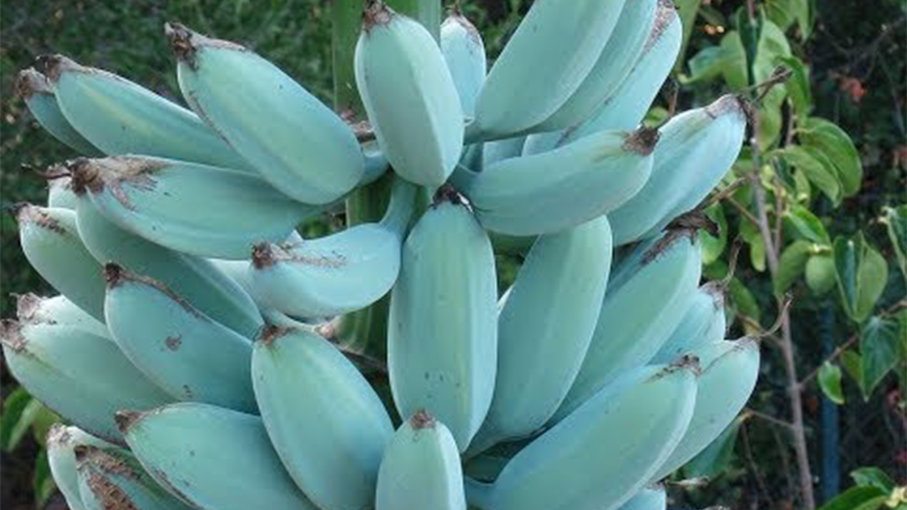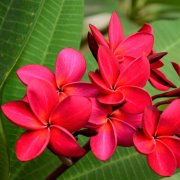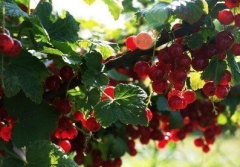What is a blue Java banana? Is there a blue banana? what does the blue banana taste like?
Have you noticed that the bananas common in your grocery store are a little, well, mundane? Blue Java banana (Musa acuminata'Blue Java'), which grows in many places in Asia, Australia and Hawaii. Because of its wax coating, immature fruit is green-silver-blue, hence its name. Its white flesh contains black seeds, which is not common for dessert bananas.
Its sweetness and soft flesh are also widely known as "ice cream" bananas, which taste similar to vanilla Egg Custard or ice cream. You can eat ripe banana ingredients. Others suggest mixing it with peanut butter into smoothies or bananas, and then mixing bananas to make all-natural ice cream. Access to Blue Java outside Asia and the South Pacific is limited. You can buy bananas in bulk from this Florida-based company. For our friends in Hawaii: several local growers grow ice cream bananas, so search farmers' markets on Big Island and Oahu.
But if you don't want to spend a lot of money shipping bananas or traveling to Hawaii, you can always try to buy a tree and plant a tree in your backyard or even indoors. Unlike other bananas, Blue Java can survive in colder climates. If you live in a hardy zone 8-11, you can grow them outdoors; if you live in an area of 4 or higher, you can grow them on the terrace and move them indoors during the cold periods of the year. But please note: these bad boys can grow to a height of more than 15 feet (4.57 meters). Find tips on taking care of trees here.
Growing interest in unorthodox bananas such as Blue Java comes at a time when the global banana market has been severely disrupted. Everyone from scientists to the media claims that the banana crisis is unfolding in front of our eyes. We have seen this happen before the Gros Michel (Musa acuminata'Gros Michel') banana, also known as & # 39 th big Mike'. Banana is an interesting name, if you haven't realized it. Although Gross Mitchell was the "it" banana of the United States before World War II, it withdrew from the market after it was destroyed by Panama disease. Then the Cavendish banana appeared together. Today about 40% of the world's banana production is made up of Cavendish, making it the de facto king of the banana world.
Cavendish thrives because it is thought to be genetic resistance to Panama disease. Although this is still true, fungal Fusarium oxysporum f.sp. Cubense, which causes Panama disease, has been trying to crack down on Cavendish in recent years. Another fungus, known as Tropical Race 4 (TR4), has destroyed Cavendish (and other bananas), raising concerns that the fungus could disrupt banana production and could lead to economic losses and food insecurity in Latin America and Africa. Can blue Java or other bananas prove to be more resistant to this strain and eliminate Cavendish? Only time will tell.

- Prev

How to plant red frangipani trees? Pot planting technique of red egg flower nursing method at the end of flowering period
Do you like egg blossoms? Fragrant egg flowers are very suitable as specimens or key plants in the landscape, or placed in containers, so you can fully appreciate their fragrance. It is also suitable for greenhouse use. Egg blossoms are the most durable when there is plenty of sunshine.
- Next

What is currant? what nutrients do you have? How to plant currants and how to care for currant shrubs
Ornamental and practical, currants are an excellent choice for family gardens in the northern states. Rich in nutrients and low in fat, no wonder raisins are more popular than ever. Although they are usually used for baking, jams and jellies because they are sour, some types of sweetness
Related
- A course of planting techniques and methods on how to grow carrots
- How to plant the latest tulips?
- Is it better to pick tea in the morning or in the afternoon? When is the best time for tea to be picked? what is the third or fifth tea?
- Launch Yuanxiao Happy combination Haocha + Tea Yuan healthy Taste
- Penghu Tourism "Fireworks 20 Parade with You"
- 2022 West Lake Happiness holds "Digital Revitalization Voucher" and draws iphone13 and laptop.
- Banqiao Fuzhou social houses are designed to change start-up combined with police elimination to create a safe and livable environment
- The convenient measure of "mechanical weeding" in Xinbei has been abused and the Agriculture Bureau has imposed heavy penalties on the illegal land consolidation.
- Changgeng University Joins Hands with Four Memory Factories to Rescue Memory Talent Shortage
- The list of Taiwan's top 100 MVP managers is listed by the Director-General of the Farmers' Association of Sanxia District.

